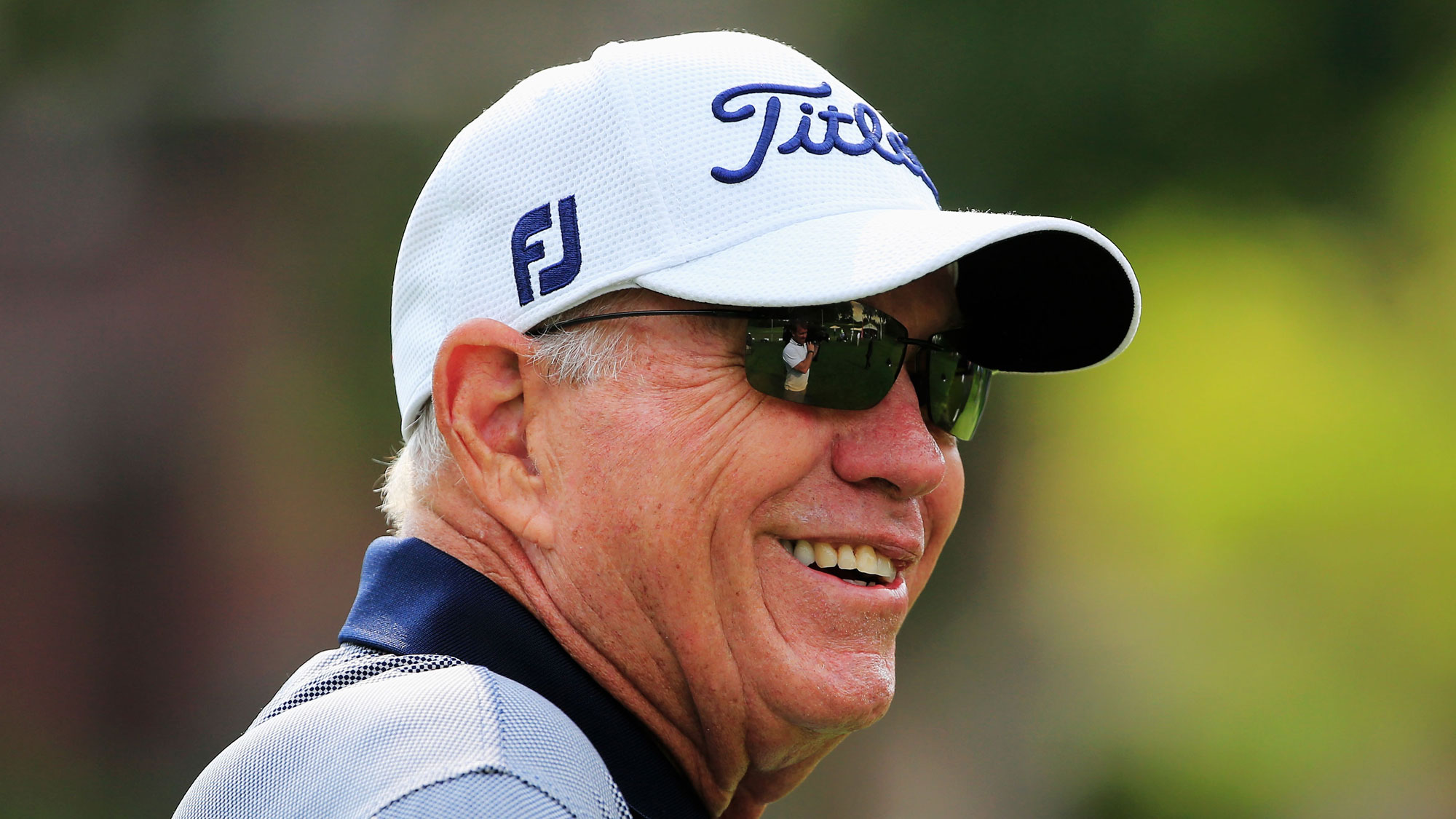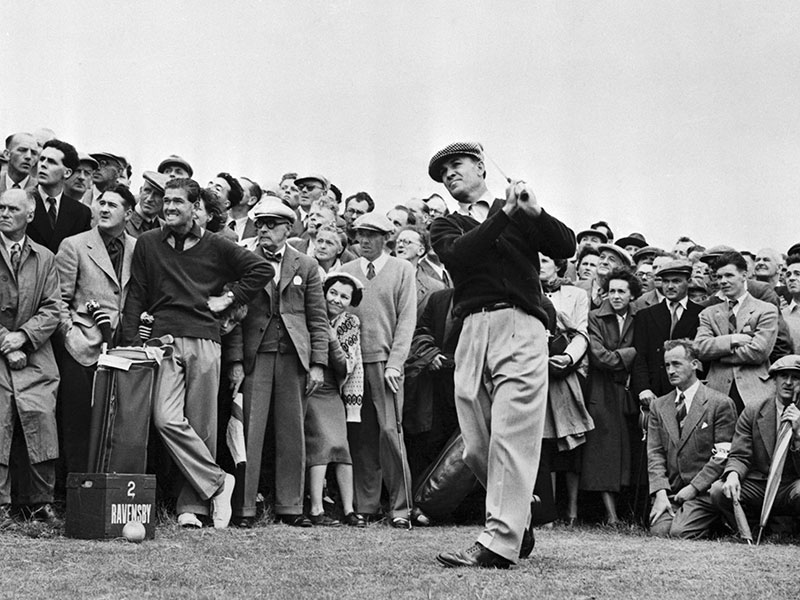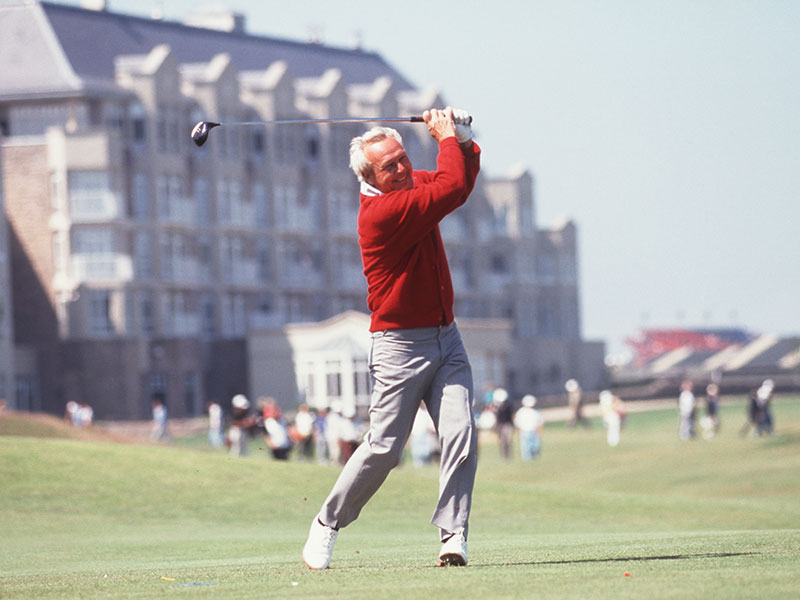
Whenever Ben Hogan’s schedule allowed it, he would visit Winged Foot Golf Club in New York to play 18 with his old friend Claude Harmon, who was club pro there from 1945 until 1978.
Harmon’s oldest son, Butch, would often carry his dad’s bag for these friendly games with Hogan, or with the other tour stars who would often stop by: Sam Snead, Jimmy Demaret and Craig Wood, while the great Tommy Armour was a Winged Foot member.
This was how Butch Harmon and his three younger brothers, Craig, Bill and Dick, grew up – watching, listening to and learning from America’s finest golfers up close. Unsurprisingly, all four brothers would become PGA professionals.
“I really learned the game by caddying for my dad in the summertime, every day from the age of around 13,” starts Butch, now 80.
“The 8th hole on the West course at Winged Foot was a long par 4, dogleg to the right. Mr Hogan once hit his tee shot into the rough, and I watched as he took his 4-wood, opened the clubface wide open and beat down on the ball to hit this beautiful high fade on to the green. I would see these great players hit these shots and then when I got done caddying I would pick up my clubs and go to that spot, throw my ball down and try to hit the same shot.
“I would ask them questions about their shots, so unbeknown to me at that young age, I was learning about teaching just by watching the best players. I don’t think you can put a price tag on that kind of experience, but it was just a way of life for us as kids.”

Learning From The Best
The Harmon family knew a side to Hogan – a nine-time Major Champion and notoriously unsociable – that few others saw. “Mr Hogan was an introvert,” says Harmon, who always refers to his father’s close friend as ‘Mr Hogan’. “He didn’t feel comfortable around people he didn’t know, but he and my father were best friends and he was wonderful to me, my brothers and our family – very kind and very open. My father and Mr Hogan would play practice rounds together at the Major Championships. As a young boy, I would go to all the Majors with my dad and I would just walk down the fairways with them. In those days there weren’t any ropes.”
Hogan was not a typical tour pro and Claude Harmon was not a typical club pro. There is no question he had the game to play on tour full time, but in that era, not long before golf became a popular television spectacle in the late 1950s, the tour game was a profession wracked with insecurity and few made a decent living.
Claude Harmon, on the other hand, enjoyed one of the best club jobs in the country at Winged Foot, spent the winter months as pro at Seminole in Florida and later at Thunderbird in Palm Springs – a club favoured by a string of US presidents – and cherry-picked his tournament appearances. In 1948, Harmon became the last club pro to win a Major at The Masters, tieing the tournament record score of 279. Born in Savannah, Georgia in 1916, Harmon was the first native Georgian to win The Masters.
At Winged Foot in the 1950s, when Claude did not have time to give Butch and his brothers lessons, the responsibility would be delegated to his assistants, some of whom would one day become Major Champions themselves, like Jackie Burke and Dave Marr. These were Butch Harmon’s babysitters.

Walking With Arnie
Aged 16, Butch worked as a scoreboard carrier at the 1960 Palm Springs Desert Golf Classic at Thunderbird. “Before the last round the caddie master said to me, ‘Hey, Butch, what group do you want to go with?’,” explains Harmon. “I said, ‘Arnold Palmer’s group, are you kidding!’ The caddie master said, ‘But he’s not leading’, and I said, ‘Don’t worry, he’s going to win and I want to be there’.”
At the turn of the 1960s, Palmer played the star role as golf reached into the consciousness of millions of Americans. Like most teenage golfers at this time, Harmon was a devoted member of ‘Arnie’s Army’.
“I used to tug my pants up like him and waggle the club like him,” adds Harmon. “That day at Thunderbird, Arnold shot something low, in the 60s. The 16th was a par 3, about 190 yards, and he hit the most beautiful high draw to about six feet. I was carrying the sign and Arnold knew who I was. He talked to me on the course and he said, ‘How about that shot, Butchie-boy, do you like that one?’
“I was like, ‘That was a great shot, Mr Palmer, but I don’t have any more numbers to put up on the board’. In those days, they didn’t have enough numbers for the 21-under-par that Arnold was reaching. You couldn’t use just a ‘2’ and a ‘1’. Arnold had out-scored my numbers. He said: ‘I’m going to run you out of numbers, young man!’
“We got up to the green and Arnold missed the putt. I felt bad. I was a 16-year-old kid and I thought I had jinxed him or something. He parred 16 and on 17 I hung back and wouldn’t walk with the group. After Arnold drove on 18 he said to me, ‘Get on up here. You didn’t make me miss that putt, it was my fault!’”
A five-round test of endurance, Palmer won the 1960 Palm Springs Desert Golf Classic with a final score of 338. The first prize of $12,000 was the biggest cheque of Palmer’s career at the time and set him rolling on the most famous season of his career.
“Things like that happened to me and my brothers when we were young,” reflects Harmon. “We took instances like those for granted. That was just our lives. Our dad was a great player and a great teacher. I don’t think it was until we reached our 40s and all became successful professionals that we looked back and thought, ‘My gosh, think about all the things we have been through that most people don’t get the opportunity to do, and how fun it all was’. We were given a master’s degree in watching the greatest players in the world and we didn’t know it.”







